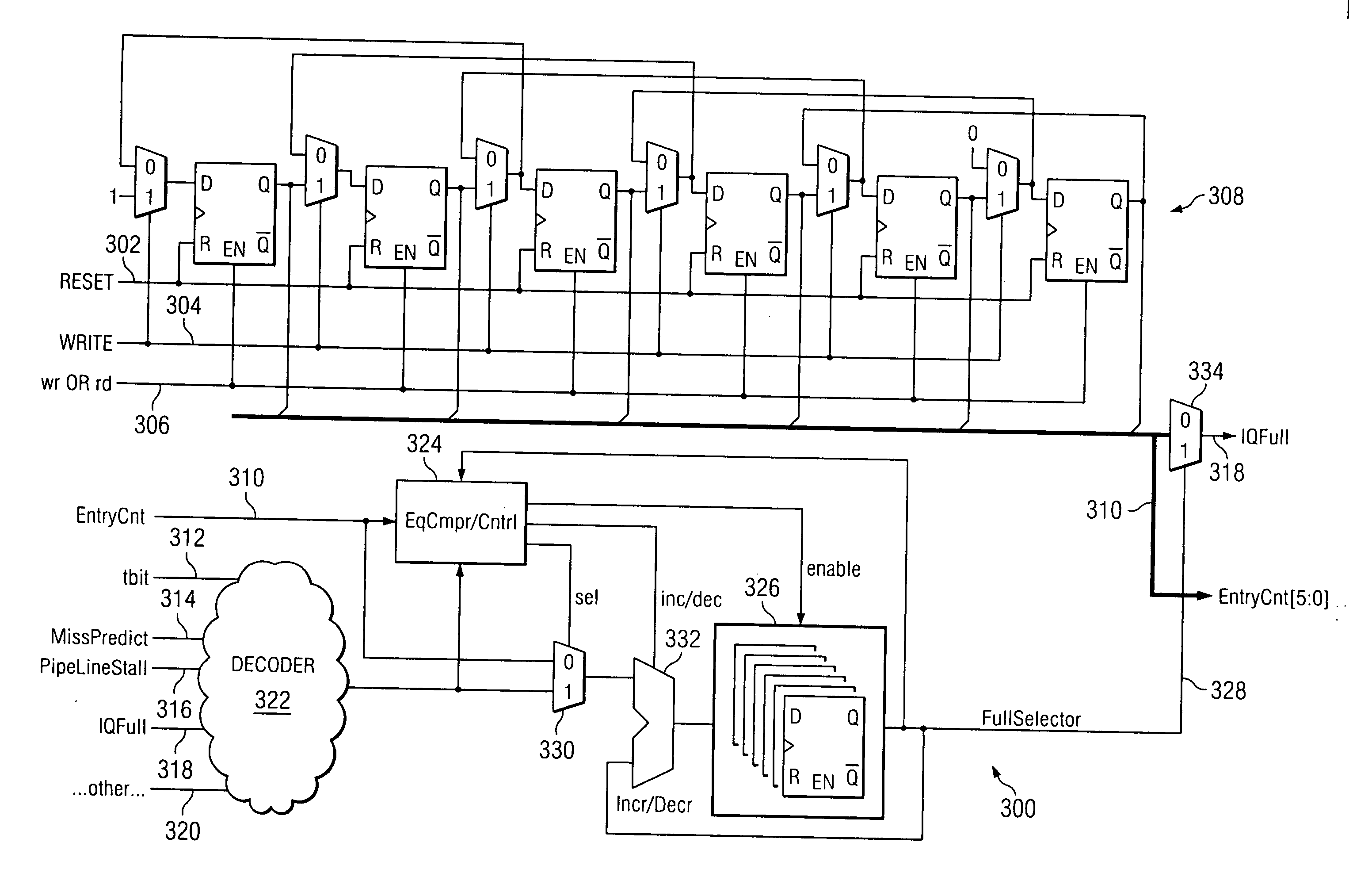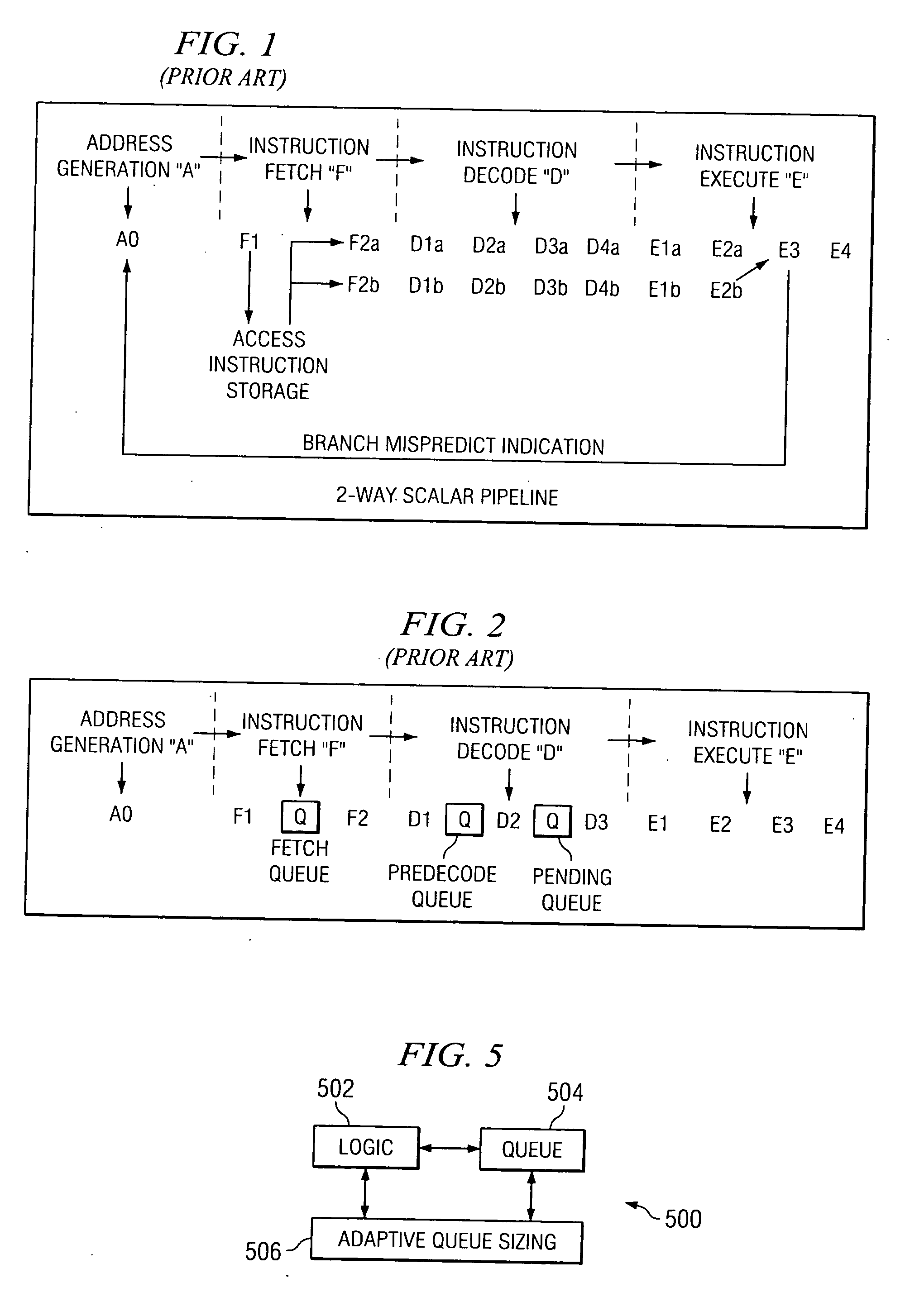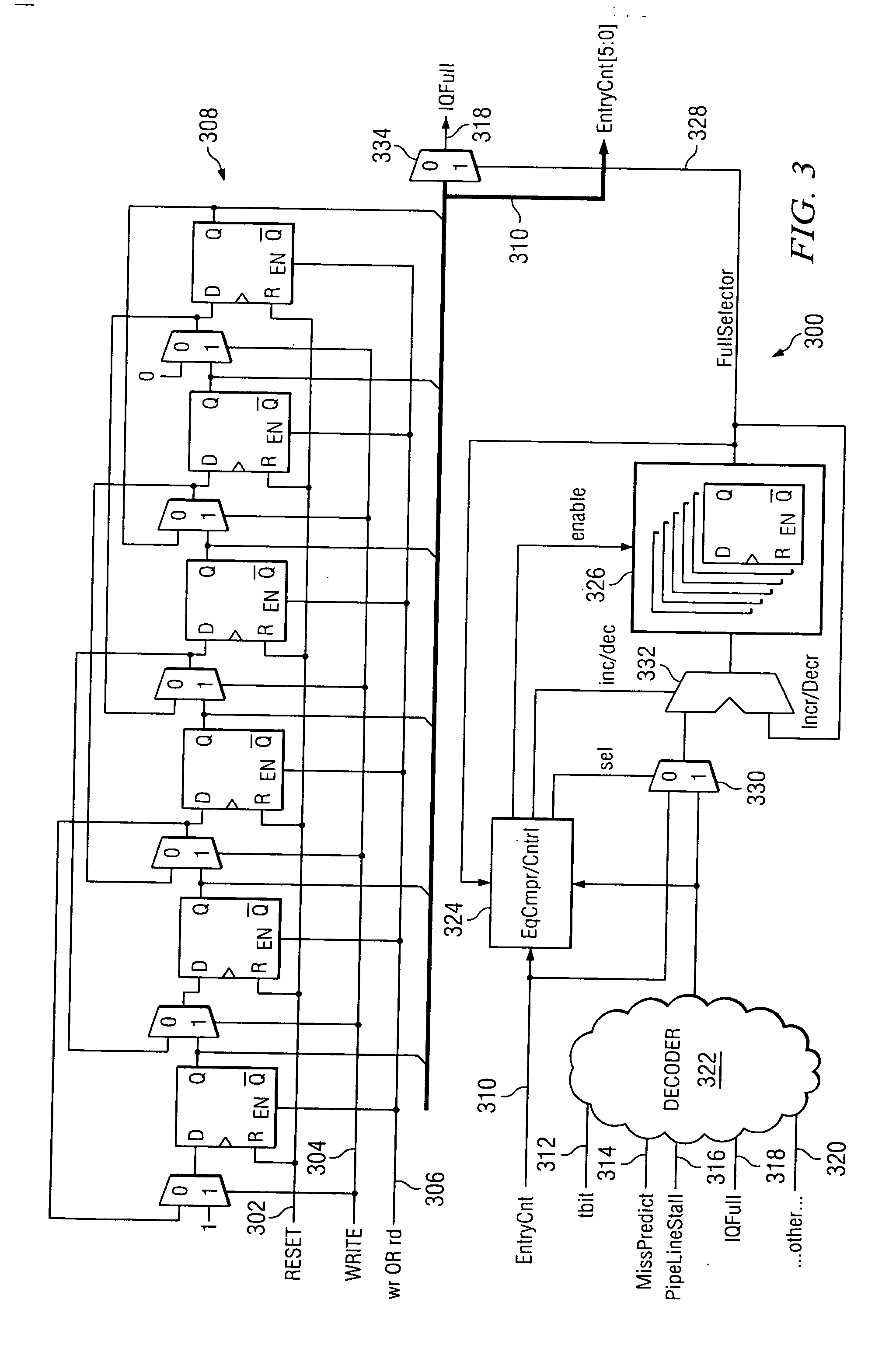Method and apparatus for adaptive buffer sizing
a buffer structure and buffer technology, applied in the field of electronic devices, can solve the problems of buffer structure implicit “costs” associated with its use, local memory bandwidth is commonly not available to other circuits, and consumption of this bandwidth is an associated cost of the buffer structur
- Summary
- Abstract
- Description
- Claims
- Application Information
AI Technical Summary
Benefits of technology
Problems solved by technology
Method used
Image
Examples
Embodiment Construction
[0015] In accordance with an embodiment of the invention, the size of a buffer such as a queue is adaptively altered based on instruction set size and / or other factors, providing for a potential reduction in power while maintaining performance for all instruction sizes. A “watermark” (compare value) rather than an absolute (fixed) count of the number of used entries in the queue is used to determine when a queue is full. As an illustrative example, if a queue is sized to hold sixteen 32-bit instructions, the watermark is set to sixteen. When the instruction size is 16-bit, the queue now holds twice as many instructions than necessary, so the queue size watermark is adjusted to a value of eight.
[0016] The high watermark is used to generate a “full” (queue full) indication to the up-stream logic responsible for filling the queue. The “full” indication halts the upstream logic from adding further entries to the queue, therefore the apparent size of a queue can be adjusted by adjusting...
PUM
 Login to View More
Login to View More Abstract
Description
Claims
Application Information
 Login to View More
Login to View More - R&D
- Intellectual Property
- Life Sciences
- Materials
- Tech Scout
- Unparalleled Data Quality
- Higher Quality Content
- 60% Fewer Hallucinations
Browse by: Latest US Patents, China's latest patents, Technical Efficacy Thesaurus, Application Domain, Technology Topic, Popular Technical Reports.
© 2025 PatSnap. All rights reserved.Legal|Privacy policy|Modern Slavery Act Transparency Statement|Sitemap|About US| Contact US: help@patsnap.com



